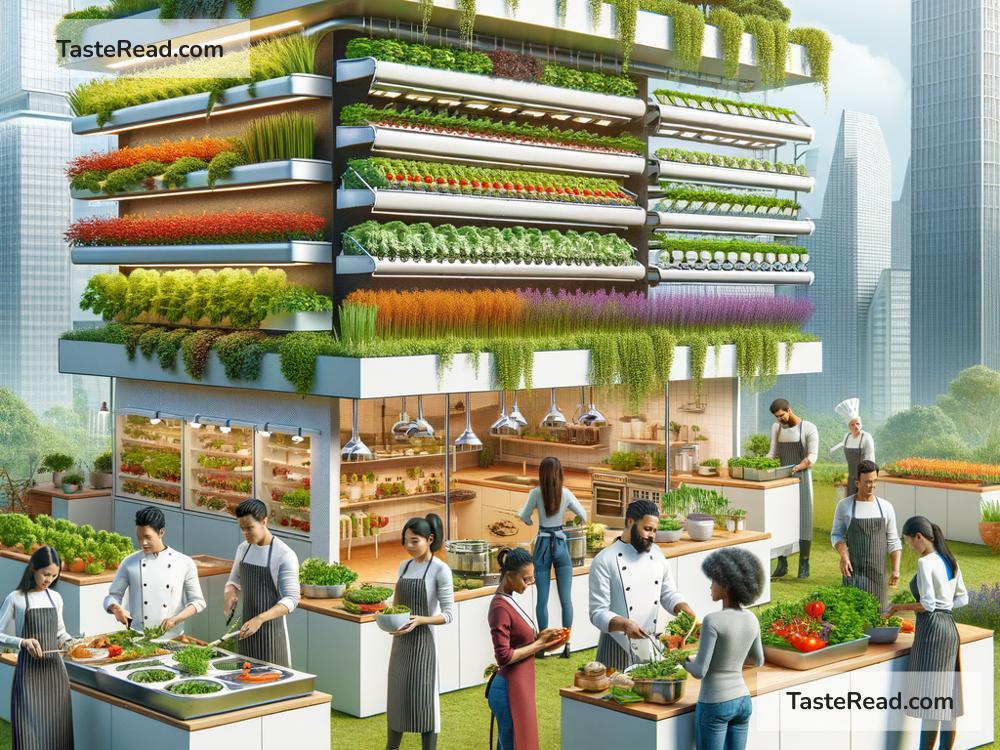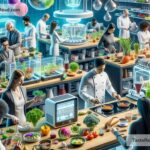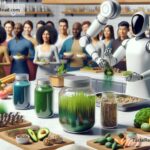The Future of Food: Building Inclusive and Sustainable Systems
Food is more than just a necessity—it’s a cornerstone of human life and culture. From the dinner table to the farms where food is grown, the systems behind what we eat are complex and interconnected. As the world faces challenges like climate change, population growth, inequality, and shifting diets, the future of food becomes one of the most important conversations of our time. How will we ensure that everyone has access to nutritious meals while protecting the planet? The answer lies in building inclusive and sustainable food systems.
What Are Food Systems?
A food system includes everything involved in producing, transporting, distributing, eating, and even disposing of food. This starts with farmers planting crops or raising livestock and ends with food waste being thrown away or turned into compost. Between those steps, there are grocery stores, restaurants, packaging facilities, trade markets, and many other pieces connected to the puzzle of food.
Today, our global food systems face significant difficulties. About one-third of all food produced is wasted, while millions of people worldwide still go hungry. Industrial farming practices often harm the environment through deforestation, greenhouse gas emissions, and water pollution. In addition, not everyone has equal access to food—low-income communities often struggle to find affordable, healthy options. If we want a better future for food, we need to rethink the way our systems work.
Sustainability: Growing Food Without Harm
One major challenge for the future of food is making it sustainable. This means growing and producing food in ways that don’t harm the environment or exhaust natural resources. Climate change is already affecting crops and food supplies, with rising temperatures, unpredictable weather, and water shortages making farming more difficult in many areas. To tackle these problems, scientists and farmers are working together to find solutions.
For example, regenerative agriculture is a farming method that helps restore soil health and improve biodiversity. It involves practices like planting cover crops, rotating crops, and reducing the use of chemical pesticides. These techniques not only make farms more environmentally friendly but also help increase yields.
Another key innovation in sustainable food systems is the development of alternative proteins. Foods like plant-based burgers or lab-grown meat reduce the need for raising animals, which is a major source of greenhouse gas emissions. With more companies investing in this technology, some experts believe these alternatives could become a normal part of diets worldwide.
Inclusivity: Making Food Systems Fair
An inclusive food system is one that works for everyone. Right now, inequality is a huge problem—some people eat too much while others don’t have enough. Healthy food is often out of reach for certain communities due to high costs or lack of access. Many small-scale farmers, especially in developing countries, struggle to compete with large corporations and face financial hardships.
To build a fairer system, governments, businesses, and communities must work together to ensure that everyone has access to affordable, nutritious food. One way to do this is by supporting local farms and food markets. When people buy food grown close to home, it strengthens local economies and creates jobs.
Another important step is improving global trade policies. Many small-scale producers are excluded from international markets because of strict regulations or trade barriers. Fair trade initiatives can empower these farmers by ensuring they get a fair price for their products and have opportunities to scale up their businesses.
Technology and Innovation: The Food of Tomorrow
Technology is playing a growing role in shaping the future of food. Smart farms that use drones, sensors, and artificial intelligence are helping farmers optimize their work. These tools can monitor crops remotely, detect pests, and even suggest the best times to plant or harvest. This makes farming more efficient and reduces waste.
On the consumer side, apps and tools are helping people make better food choices. Some apps help users track their diets, learn about sustainable eating, or find nearby stores that sell local products. Technology has also helped food delivery services connect people to fresh meals with the click of a button.
In addition, blockchain technology is improving transparency in food supply chains. Blockchain allows people to track where their food comes from, how it was produced, and whether it meets sustainability or ethical standards. For example, with a quick scan of a QR code on a package, consumers can see the entire journey of their food.
Community Participation: Everyone Has a Role
The future of food systems isn’t just about farmers or big companies—it’s about all of us. Every choice we make as individuals impacts the larger system, from the foods we buy at the grocery store to whether we compost or throw leftovers in the trash. Community initiatives like urban farms, food-sharing programs, and education campaigns can bring people together to make food systems more inclusive and sustainable.
Governments also have a big role to play by creating policies that prioritize public health, climate resilience, and fairness in food industries. Business leaders can invest in ethical practices, while consumers can support brands and products that align with these goals.
Conclusion: A Shared Vision
The future of food doesn’t have to be bleak. With the right mix of innovation, collaboration, and commitment, we can build food systems that are both sustainable and inclusive. Imagine a world where farmers earn fair wages, everyone has access to nutritious meals, and the environment thrives alongside agriculture. While there’s no single solution, the combination of regenerative farming, alternative proteins, better trade policies, and smart technology is paving the way for progress.
Ultimately, food connects us all. It’s not just about what’s on our plates—it’s about the people who grow, sell, and share it. By working together, we can create a food system that nourishes both people and the planet, ensuring a healthier future for generations to come.


